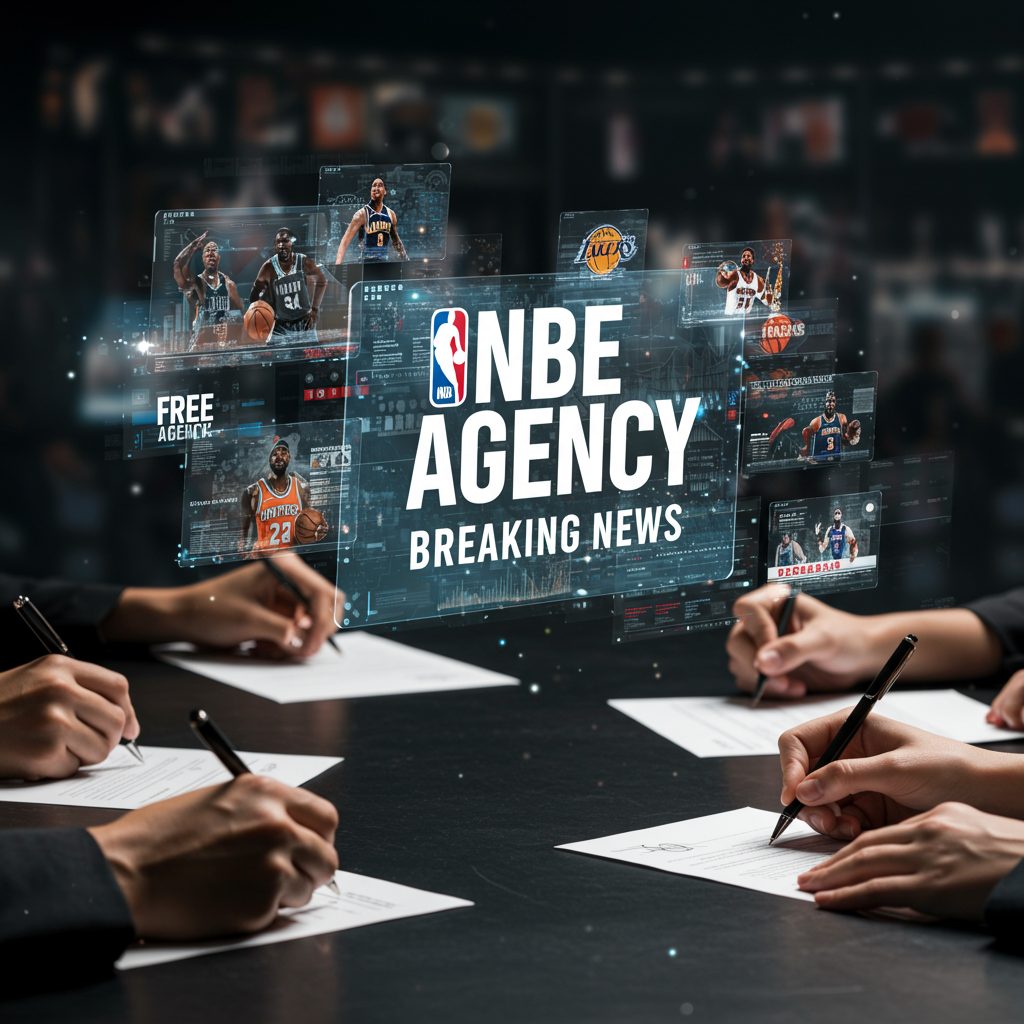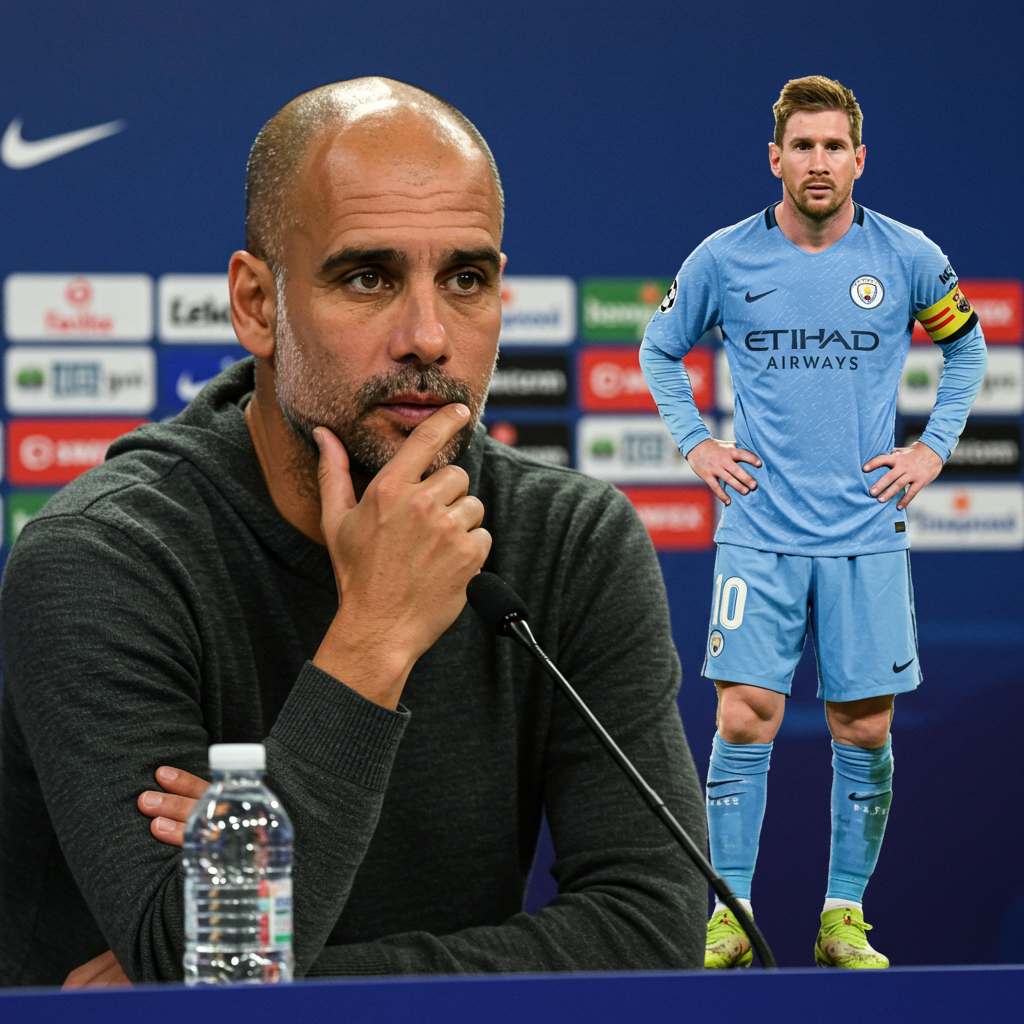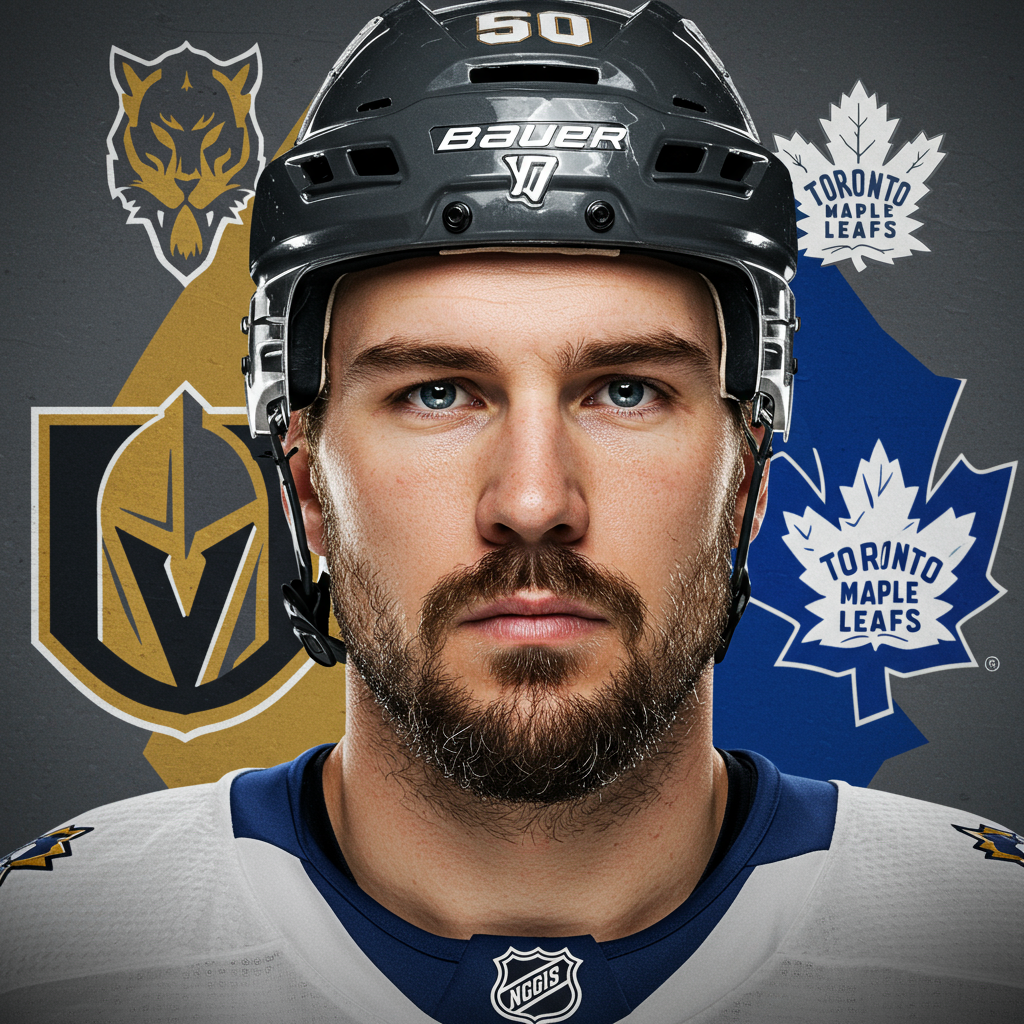The electrifying rush of NBA Free Agency 2025 burst open on Monday, July 1st, unleashing a torrent of major deals, unexpected trades, and strategic roster shifts across the league. As the clock struck 6 p.m. ET, teams and players began finalizing agreements, instantly redrawing the competitive map for the upcoming season. This summer’s landscape is notably shaped by the complexities of the new Collective Bargaining Agreement and strict NBA salary cap regulations, particularly the punitive “second apron” rules implemented in 2023.
Unlike years past often defined by superstar free agent migrations, this period emphasizes retaining homegrown talent and executing savvy trades to navigate financial constraints. The stringent second apron penalties impose escalating luxury taxes and severely limit team-building tools for the highest-spending franchises. This dynamic incentivizes teams to operate below the threshold, making cost-cutting moves and finding value paramount. While a few prominent figures like LeBron James and Kevin Durant resolved their situations before the official window, the initial hours delivered a fascinating blend of significant extensions for key players and impactful player movement via trade.
Blockbuster Deals Set the Tone Early
The opening moments of free agency wasted no time, delivering seismic shifts that immediately reshaped the contender picture. These included a surprising trade involving a recent championship core piece and a maximum contract extension for a defensive cornerstone.
Nuggets Prioritize Payroll, Trade Michael Porter Jr.
One of the first major transactions saw the Denver Nuggets send starting forward Michael Porter Jr. and a future 2032 first-round draft pick to the Brooklyn Nets in exchange for forward Cam Johnson. This maneuver clearly signals Denver’s commitment to managing its payroll under the new CBA, even after winning the 2023 title with Porter Jr. as a vital starter alongside Nikola Jokic and Jamal Murray.
Porter Jr., 27, averaged 18.2 points and 7.0 rebounds last season. However, his contract carried substantial annual salaries exceeding $38 million for the next two seasons. Despite his gifted outside shooting, the Nuggets viewed this deal as a financial luxury they could no longer afford. The Nets, possessing significant salary cap flexibility, readily absorbed Porter Jr.’s contract. In return, they acquired a valuable unprotected future first-round pick. Brooklyn sent back Cam Johnson, a reliable 3-point threat with similar elite shooting numbers (39.0% in 2024-25). Johnson, two years older than Porter Jr., also offers better perimeter defense and some playmaking ability, averaging 18.8 points, 3.4 assists, and 2.8 threes last season. He is also on a more financially manageable contract for Denver, earning around $20-22 million annually over the next two years. Analysts largely praised the Nuggets for making a move worth the cost, viewing Johnson as a strong fit with Nikola Jokić, awarding Denver an ‘A’ grade for the trade, while Brooklyn received a ‘B+’ for adding a valuable future asset. This trade underscores Denver’s focus on financial sustainability and roster flexibility while striving to maintain competitiveness.
Memphis Secures Future with Jaren Jackson Jr. Max
Across the league, the Memphis Grizzlies quickly solidified a foundational piece by agreeing to a maximum contract extension with star big man Jaren Jackson Jr. Sources indicate the agreement is a five-year deal worth approximately $236 million, though some reports place it slightly higher at $240 million. This massive investment locks up the 25-year-old Jackson Jr., a two-time All-Star and the reigning 2023 Defensive Player of the Year.
Jackson Jr. averaged 22.2 points, 5.6 rebounds, and 1.5 blocks last season. His extension follows a previous move by Memphis to trade guard Desmond Bane, partly creating the financial room for this maximum offer. Securing Jackson Jr. provides much-needed stability for the Grizzlies, who have navigated recent off-court issues and coaching changes. Analysts considered this extension inevitable despite the high cost, grading it a ‘B+’ as losing their defensive anchor and consistent scorer would have been devastating. Alongside this major move, Memphis also agreed to re-sign forward Santi Aldama to a three-year, $52.5 million contract. Aldama became an essential reserve last season, averaging 12.5 points, 6.4 rebounds, 2.9 assists, and 1.8 threes. His well-rounded production at just over 11% of the cap earned the Grizzlies an ‘A-‘ grade for this signing. These deals require the Grizzlies to shed roughly $10 million in salary to meet cap compliance requirements and finalize the agreements.
Suns Acquire Mark Williams, Reshape Frontcourt
The Phoenix Suns, actively reshaping their roster following the Kevin Durant trade to the Houston Rockets, made a significant move by acquiring center Mark Williams from the Charlotte Hornets. In the trade, the Suns sent guard Vasilije Micić, the draft rights to Liam McNeeley, the 29th overall pick in the 2025 NBA Draft, and a 2029 first-round pick (least favorable of Cleveland, Minnesota, Utah) to Charlotte. Phoenix also received their 2029 second-round pick back. Suns GM Brian Gregory praised Williams’ size, length, finishing, rim protection, rebounding, passing, and motor, noting his addition strengthens the center position. This move required the Suns to pick up Micić’s $8.1M team option.
Key Free Agent Signings & Team Building Strategies
Beyond the headline-grabbing trades and max extensions, several teams addressed needs and added depth through targeted free agency agreements.
Houston Rockets Make Significant Additions
The Houston Rockets, already active by acquiring Kevin Durant via trade prior to free agency, continued an aggressive offseason. They agreed to sign veteran forward Dorian Finney-Smith to a four-year, $53 million contract. Finney-Smith is highly valued for his defensive versatility and 3-point shooting (41.1% last season). He provides a valuable “3-and-D” wing, fitting coach Ime Udoka’s defensive philosophy perfectly. His impact is reflected in his positive on/off splits (+8.6 on, -4.8 off per 100 possessions). This deal, including a player option and trade kicker, indicates significant commitment. Analysts lauded the move as a “no-brainer,” giving it an ‘A’ grade due to Finney-Smith’s fit and value.
Additionally, Houston agreed to sign veteran center Clint Capela to a three-year, $21.5 million deal, bringing the former Rocket back to the team that drafted him. Capela adds rebounding and shot-blocking depth to a frontcourt that also recently saw extensions for Jabari Smith Jr. ($122 million over five years) and re-signings for Fred VanVleet and Steven Adams. While Capela provides a pure pick-and-roll finishing option, some analysts questioned the fit in an already crowded center rotation featuring Alperen Şengün and Adams, grading it a ‘C-‘. These moves, coupled with the Durant acquisition and retaining young talent, underscore Houston’s ambition to quickly transition from rebuilding to serious championship contention.
Other Notable Free Agent Agreements
The Los Angeles Clippers bolstered their frontcourt by signing veteran center Brook Lopez to a two-year, $18 million contract. Lopez, 37, leaves the Milwaukee Bucks after seven seasons, providing the Clippers with a skilled low-post defender and outside shooter (37.1% from deep over the last three seasons) who can back up or complement Ivica Zubac. His addition allows for stylistic flexibility, offering a spread-out look. This move received a ‘B+’ grade. This addition follows the re-signing of primary playmaker James Harden on a two-year, $81.5 million deal and veteran forward Nicolas Batum on a two-year, $11.5 million deal.
The Dallas Mavericks agreed to terms with guard D’Angelo Russell on a two-year contract worth approximately $13 million. Russell brings needed ball-handling and outside shooting (previously 38.4% from deep over four seasons before a dip last season) after Kyrie Irving’s season-ending knee surgery. He reunites with former Lakers teammate Anthony Davis in Dallas as the team aims to return to the postseason after previously trading Luka Doncic. While the value is good, his consistently poor defensive ratings drew a ‘C-‘ grade. Kyrie Irving, however, is expected to sign a new three-year, $119 million extension to remain with the Mavericks.
The Memphis Grizzlies added guard depth by signing Ty Jerome to a three-year, $28 million contract. Jerome had a standout reserve season in Cleveland last year, averaging 12.5 points, 3.4 assists, and 1.6 threes with a 60.6% effective field-goal percentage. His fit backing up Ja Morant is deemed “hand-in-glove,” providing a reliable option after the Desmond Bane trade. At around six percent of the cap, this deal was graded an ‘A+’ for excellent value.
The New Orleans Pelicans added size and experience with veteran center Kevon Looney on a two-year, $16 million deal after 10 years with the Golden State Warriors. Looney provides veteran leadership, defense, and offensive rebounding, though his fit in an already deep center rotation earned a ‘B-‘ grade.
The San Antonio Spurs signed veteran center Luke Kornet to a four-year, $41 million contract. Despite his limited scoring and age (30 in July), Kornet’s defensive skills, rim protection, and rebounding capability are seen as potentially valuable alongside franchise star Victor Wembanyama, potentially forming a strong defensive frontcourt. The surprising price point still earned a ‘B’ grade.
The Denver Nuggets brought back guard Bruce Brown on a one-year veteran’s minimum contract. Brown was crucial to their 2023 title run before leaving for Indiana, and his return adds a familiar, impactful presence.
The Los Angeles Lakers signed forward Jake LaRavia to a two-year, $12 million deal, quickly pivoting after missing out on Dorian Finney-Smith. LaRavia offers needed wing depth and shooting (42.3% from deep last season). This move was graded a ‘C+’. They also declined Dorian Finney-Smith’s option, making him a free agent.
The Boston Celtics added center depth on a budget, signing Luka Garza to a two-year, $5.5 million contract following trades involving Kristaps Porzingis. This move earned a ‘B+’ grade.
The Atlanta Hawks were active, acquiring sought-after free agent Nickeil Alexander-Walker via sign-and-trade on a four-year, $62 million contract. Alexander-Walker adds to their versatile defensive wings and complements players like Dyson Daniels and Jalen Johnson. His 2024-25 stats (9.4 points, 2.7 assists, 1.7 threes, 38.1% from deep) and the cost (only a second-round pick and cash) earned this deal an ‘A’. They also added elite shooter Luke Kennard on a one-year, $11 million contract, graded an ‘A’ for adding one of the league’s best pure 3-point shooters (45.4% career over five years).
The Orlando Magic addressed their point guard situation by signing Tyus Jones to a one-year, $7 million contract. Known as a low-mistake playmaker (4.7 assists to 0.9 turnovers over four years) and good shooter (39.8% from deep), Jones fits the defensive-minded Magic well and provides a reliable option alongside Paolo Banchero and Franz Wagner. This was graded an ‘A-‘. The Magic also declined team options on Moritz Wagner and Caleb Houstan.
The Chicago Bulls secured guard depth with Tre Jones on a three-year, $24 million contract. Like his brother Tyus, Tre is a steady creator (4.7 assists to 1.1 turnovers career) who significantly improved his shooting last season (39.6% from deep). This production from a backup point guard earned a ‘B+’ grade.
The Milwaukee Bucks re-signed veteran forward Bobby Portis to a three-year, $44 million deal after he declined his player option. They also added reliable volume shooter Gary Trent Jr. on a two-year, $7.5 million contract (‘B+’), and signed Kevin Porter Jr. (‘B’).
Pre-Free Agency Buzz & Key Player Statuses
Several high-profile situations were resolved just before or concurrently with the official free agency period, significantly impacting the market dynamic.
LeBron James Commits for One More Year
Los Angeles Lakers superstar LeBron James picked up his $52.6 million player option for the 2025-26 season on Sunday. The 40-year-old forward remains committed to playing for a remarkable 23rd NBA season. While this guarantees his presence with the Lakers next season, who recently acquired Luka Doncic in a major trade, James is still set to be an unrestricted free agent in 2026 and holds a crucial no-trade clause. His long-term status remains a key storyline moving forward.
Other Notable Pre-July 1st Moves
Kevin Durant: The 15-time All-Star was traded from the Phoenix Suns to the Houston Rockets last week in a major move that fundamentally reshaped the Western Conference.
Kyrie Irving: As mentioned, the star guard is expected to sign a three-year, $119 million extension to remain with the Dallas Mavericks, solidifying their backcourt alongside Anthony Davis and new #1 pick Cooper Flagg.
Julius Randle & Naz Reid: The Minnesota Timberwolves agreed to significant extensions with both forwards. Julius Randle received a three-year, $100 million deal, while Naz Reid secured five years and $125 million. These moves cement Minnesota’s frontcourt rotation but likely meant they couldn’t retain Nickeil Alexander-Walker, who is now with Atlanta via sign-and-trade.
Jordan Clarkson & Deandre Ayton: Both veteran players reached contract buyouts with the Utah Jazz and Portland Trail Blazers, respectively, allowing them to enter the free agent market. Ayton, the 2018 #1 pick, averaged a double-double but faced consistent questions about effort and consistency in Portland. Clarkson reportedly hopes to join a contender.
Salary Cap Figures Set for 2025-26
The NBA officially announced the salary cap and luxury tax figures for the upcoming 2025-26 season, providing teams with the concrete numbers framing their decisions. The salary cap is set at $154.647 million, representing a 10% increase from the previous year. The luxury tax line will be $187.9 million. The first apron sits at $195.9 million, and the most restrictive second apron is at $207.8 million. These figures underscore the financial landscape teams are navigating. Strict penalties kick in rapidly above the tax line, particularly at the second apron, impacting everything from mid-level exception sizes to trade flexibility. Non-taxpaying teams have access to a Mid-Level Exception (MLE) of $14.1 million, while taxpaying teams are limited to a smaller Taxpayer’s Mid-Level Exception (TMLE) of $5.7 million.
This complex interplay of financial realities, strategic roster goals, and the specifics of the new CBA has made the start of NBA Free Agency 2025 a intricate puzzle. The initial flurry of activity highlights the league’s dynamic nature as teams maneuver for future success within these new economic boundaries.
Frequently Asked Questions
What were the most impactful moves (trades/signings) at the start of 2025 NBA Free Agency?
The opening hours of 2025 NBA Free Agency were marked by several high-impact transactions. The Denver Nuggets traded forward Michael Porter Jr. and a 2032 first-round pick to the Brooklyn Nets for Cam Johnson, a major cost-saving move driven by the salary cap. The Memphis Grizzlies secured their future by agreeing to a maximum five-year extension with star Jaren Jackson Jr. (valued around $236-$240 million). Other notable early agreements included Dorian Finney-Smith signing with the Houston Rockets ($53M over four years), Ty Jerome joining the Grizzlies ($28M over three years), D’Angelo Russell agreeing with the Dallas Mavericks ($13M over two years), Brook Lopez heading to the LA Clippers ($18M over two years), and the Atlanta Hawks acquiring Nickeil Alexander-Walker via sign-and-trade ($62M over four years) and signing Luke Kennard ($11M over one year). The Phoenix Suns also acquired center Mark Williams from the Hornets via trade.
How are the NBA’s salary cap rules, like the second apron, affecting team decisions this offseason?
The new collective bargaining agreement significantly influences team decisions, particularly the penalties for exceeding the second apron (set at $207.8 million for 2025-26). Teams crossing this threshold face harsh luxury taxes and lose critical team-building tools like the ability to use the full Mid-Level Exception ($14.1M), execute sign-and-trades, include cash in trades, or buy draft picks. This financial pressure incentivizes teams to stay below the second apron. This often leads to cost-cutting trades, such as the Nuggets moving Michael Porter Jr., limits the pursuit of high-priced free agents, and encourages teams to focus on extending their existing players or finding value signings under the Taxpayer’s Mid-Level Exception ($5.7M).
What’s the status of key players like LeBron James, Kevin Durant, and Kyrie Irving heading into the 2025-26 season?
The statuses of several high-profile players were clarified around the start of free agency, though they weren’t traditional free agents entering the market on July 1st. LeBron James picked up his $52.6 million player option with the Los Angeles Lakers for the 2025-26 season, ensuring he plays next year but keeping his long-term future open as he is set for unrestricted free agency in 2026. Kevin Durant was involved in a major trade before free agency officially opened, moving from the Phoenix Suns to the Houston Rockets. Kyrie Irving is expected to sign a new three-year, $119 million contract extension to remain with the Dallas Mavericks, solidifying their backcourt.
This free agency period promises continued activity as teams strategically navigate the financial landscape and strive to build winning rosters.
Word Count Check: 1838



